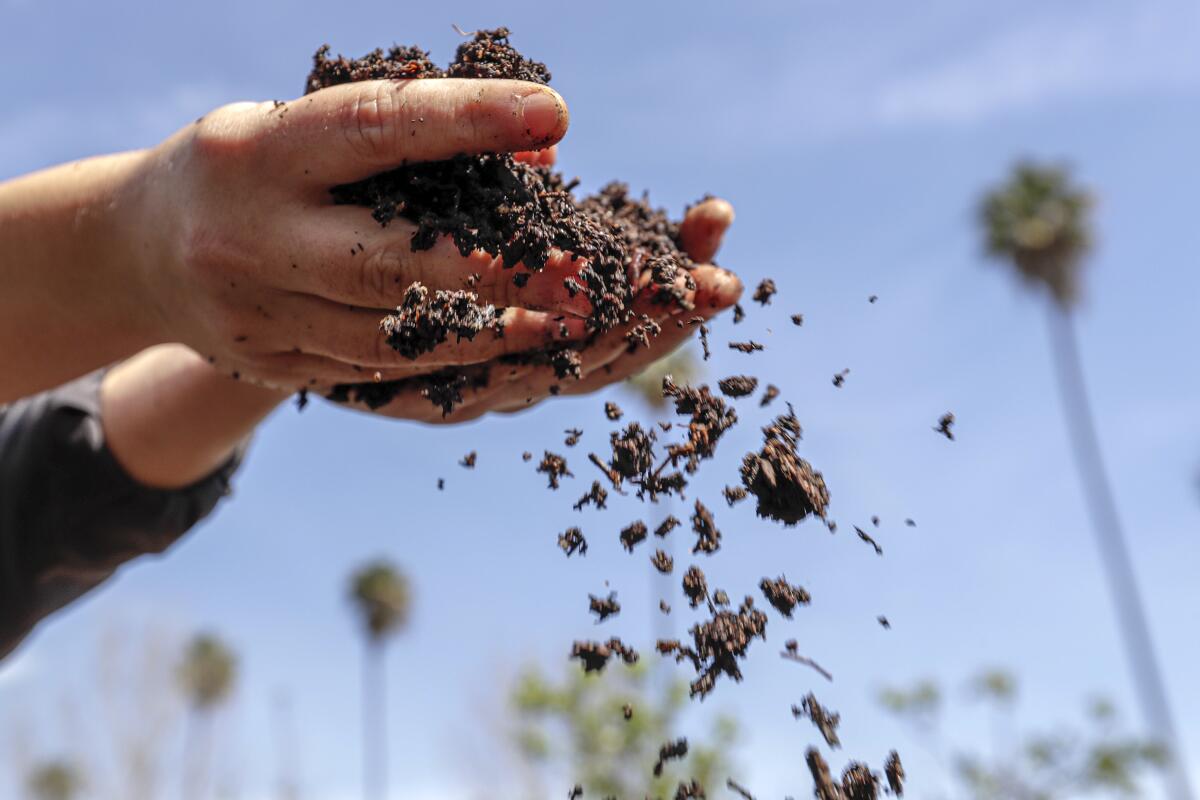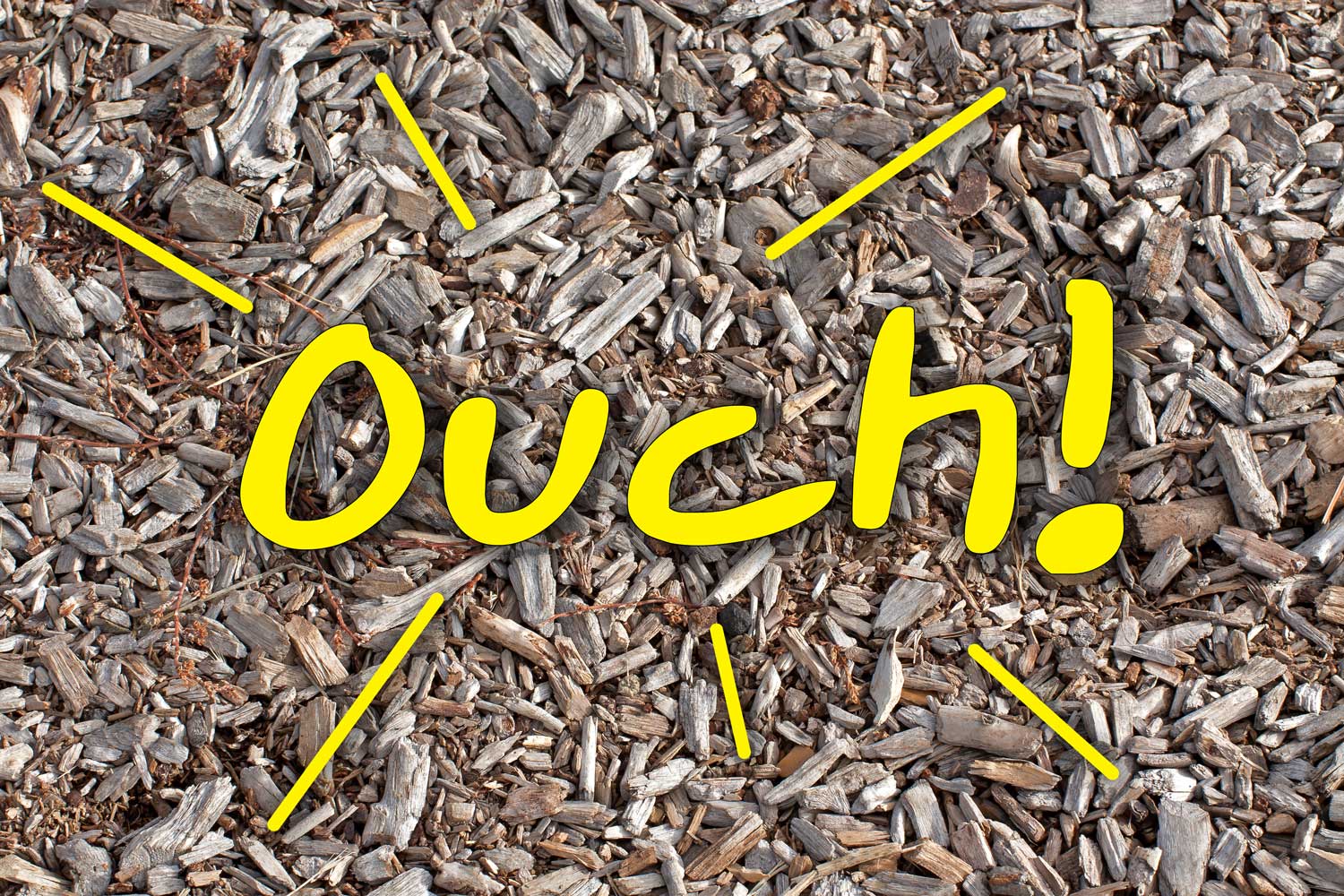Yes, you can use sawdust as mulch. It requires proper preparation to avoid nitrogen depletion in the soil.
Sawdust mulch can benefit your garden by conserving moisture, suppressing weeds, and improving soil structure over time. To use it effectively, you must first ensure that it is well-composted or mixed with nitrogen-rich materials. Fresh sawdust can tie up nitrogen, making it unavailable to plants, so balance is crucial.
Apply a thin layer around plants and avoid direct contact with stems. Sawdust mulch can acidify soil, so monitor pH levels and adjust as needed. Properly prepared sawdust mulch can be a cost-effective and efficient option for gardeners seeking sustainable practices.
Introduction To Sawdust Mulch
Sawdust mulch is a topic of much debate among gardeners. Many people wonder if it’s a good choice for their gardens. To decide, you need to understand what sawdust is and how it works as mulch.
What Is Sawdust?
Sawdust is tiny wood particles produced when cutting or sanding wood. It often comes from sawmills and woodworking shops. The type of wood can affect its properties.
Sawdust can be from hardwoods or softwoods. Hardwood sawdust is denser and decomposes slower. Softwood sawdust is lighter and breaks down faster. Knowing the type of sawdust can help in making the right choice for mulch.
Benefits Of Mulching
Mulching offers several benefits to gardens. Here are some key points:
- Retains moisture: Mulch helps the soil hold water.
- Suppresses weeds: It prevents weed seeds from getting sunlight.
- Regulates temperature: Mulch keeps soil cooler in summer and warmer in winter.
- Prevents erosion: It protects soil from being washed away by rain.
- Improves soil health: Organic mulch, like sawdust, adds nutrients as it decomposes.
Using mulch can greatly benefit your garden’s health and appearance. Sawdust mulch can be a great option if used correctly.

Credit: www.latimes.com
Advantages Of Using Sawdust
Sawdust is an often-overlooked mulch option. It offers several benefits that can make your garden thrive. Here are the key advantages of using sawdust as mulch.
Cost-effective Solution
Using sawdust as mulch can be a cost-effective solution for gardeners. Sawdust is usually a byproduct of woodworking. This means it can often be acquired for free or at a low cost. Gardeners can save a significant amount of money by choosing sawdust over traditional mulching options.
Here’s a quick comparison:
| Mulch Type | Cost |
|---|---|
| Sawdust | Free or low cost |
| Bark Mulch | Moderate to high cost |
| Compost | Moderate cost |
Eco-friendly Option
Sawdust is an eco-friendly option for mulching. It is a natural byproduct, making it a sustainable choice. Using sawdust helps recycle waste from woodworking, reducing landfill use.
Benefits of using sawdust include:
- Reduces landfill waste
- Recycles natural materials
- Minimizes environmental impact
Sawdust also helps maintain soil moisture. It prevents water evaporation, which means less frequent watering. This makes it an excellent option for conserving water in your garden.
Potential Drawbacks
Using sawdust as mulch can have several potential drawbacks. It’s essential to understand these issues before applying sawdust to your garden. Let’s explore some of the common problems associated with sawdust mulch.
Acidity Issues
Sawdust can increase soil acidity. This happens because sawdust often comes from pine or other acidic woods. Acidic soil can harm plants that prefer neutral or alkaline conditions. To avoid this, regularly check your soil’s pH level.
Here is a table showing how different plants react to soil acidity:
| Plant Type | Preferred Soil pH |
|---|---|
| Blueberries | 4.5 – 5.5 |
| Rhododendrons | 4.5 – 6.0 |
| Tomatoes | 6.0 – 6.8 |
| Lettuce | 6.0 – 7.0 |
Nitrogen Depletion
Sawdust can deplete nitrogen in your soil. This happens during the decomposition process. Microorganisms break down sawdust and use soil nitrogen. This leaves less nitrogen for your plants.
Symptoms of nitrogen deficiency include:
- Yellowing leaves
- Stunted growth
- Poor fruit or flower production
To combat nitrogen depletion, consider these tips:
- Use a nitrogen-rich fertilizer.
- Mix sawdust with compost before applying.
- Apply sawdust in thin layers.
Understanding these potential drawbacks helps you use sawdust effectively. Proper management ensures your garden stays healthy.

Credit: adventureturf.com
Preparing Sawdust For Mulch
Using sawdust as mulch can benefit your garden. Proper preparation is essential for the best results. This section will guide you through the necessary steps to prepare sawdust for mulch.
Composting Sawdust
Sawdust needs composting before use. Fresh sawdust can harm plants. It can steal nitrogen from the soil. Composting sawdust balances the nitrogen levels.
Here are the steps to compost sawdust:
- Mix sawdust with green materials like grass clippings.
- Ensure a balance of 25 parts carbon to 1 part nitrogen.
- Keep the compost pile moist.
- Turn the pile every few weeks for even decomposition.
Composting sawdust can take several months. Patience is key for rich, healthy mulch.
Mixing With Other Materials
Mixing sawdust with other materials can improve its effectiveness. Combining sawdust with compost or manure adds nutrients.
Consider these combinations:
- Sawdust and compost: Add equal parts for balanced mulch.
- Sawdust and manure: Mix 1 part sawdust with 2 parts manure.
- Sawdust and soil: Blend 1 part sawdust with 3 parts soil.
Ensure the mixture is well-blended. This prevents nitrogen depletion and promotes healthy plant growth.
Application Techniques
Using sawdust as mulch can be an effective way to enrich your garden. Understanding the correct application techniques ensures you get the best results. Below, we discuss two critical aspects: Layer Thickness and Mulching Around Plants.
Layer Thickness
The thickness of the sawdust layer is crucial for its effectiveness. A layer that is too thin will not provide adequate weed control. Conversely, a layer that is too thick can suffocate your plants.
- For general mulching, aim for a layer thickness of 2 to 3 inches.
- If using sawdust for pathways, increase the thickness to 4 inches.
- Regularly check the thickness and replenish as needed.
Mulching Around Plants
Properly mulching around plants helps protect roots and retain moisture. Follow these steps for the best results:
- Clear the area around the plants of any weeds.
- Spread the sawdust evenly around the base of the plants.
- Ensure the sawdust does not touch the plant stems to prevent rot.
- Leave a gap of 1 to 2 inches around the stems.
By following these application techniques, you can effectively use sawdust as mulch in your garden. Proper layering and mulching around plants are key to achieving healthy, thriving plants.
Best Practices
Using sawdust as mulch can be beneficial for your garden. It helps retain moisture, suppress weeds, and improve soil health. But, there are some best practices to follow to ensure its effectiveness.
Choosing The Right Type
Not all sawdust is suitable for mulching. Hardwood sawdust is often better because it decomposes slower than softwood. Untreated sawdust is crucial to avoid chemicals that could harm plants. Always ensure the sawdust is clean and free of contaminants.
Seasonal Considerations
Spring and fall are the best times to apply sawdust mulch. In spring, it helps retain moisture during the growing season. In fall, it protects the soil from winter conditions.
During summer, sawdust can keep soil cool and moist. But, be cautious during winter as it can cause excessive moisture retention, leading to root rot.
| Season | Benefits | Precautions |
|---|---|---|
| Spring | Retains moisture, promotes growth | Avoid thick layers |
| Summer | Keeps soil cool, retains moisture | Watch for mold |
| Fall | Protects soil, retains heat | Monitor moisture levels |
| Winter | Insulates soil | Prevent root rot |
- Apply a thin layer of sawdust, about 1-2 inches.
- Mix sawdust with other organic matter to balance nutrients.
- Monitor pH levels as sawdust can acidify soil over time.
- Use sawdust from untreated wood to avoid harmful chemicals.
Alternatives To Sawdust
Using sawdust as mulch has its pros and cons. Exploring alternatives can be beneficial. Let’s look at some effective substitutes for sawdust mulch.
Wood Chips
Wood chips are a great alternative to sawdust. They decompose slowly, providing long-term benefits. Wood chips help retain soil moisture. They also suppress weeds effectively.
Here are some benefits of wood chips:
- Improve soil structure
- Attract beneficial insects
- Reduce soil erosion
Avoid using wood chips from treated wood. Chemicals from treated wood can harm plants and soil.
Straw And Hay
Straw and hay are another excellent alternative. They decompose faster than wood chips. This quick decomposition enriches the soil with nutrients.
Benefits of using straw and hay:
| Straw | Hay |
|---|---|
| Long-lasting mulch | Rich in nutrients |
| Light and easy to spread | Effective for retaining moisture |
Ensure the straw and hay are free from seeds. Seeds can introduce unwanted weeds to your garden.

Credit: www.customtruck.com
Frequently Asked Questions
Can Sawdust Be Used As Mulch?
Yes, sawdust can be used as mulch. It helps retain moisture, suppress weeds, and improve soil texture.
Is Sawdust Mulch Good For Plants?
Sawdust mulch is beneficial for plants. It conserves soil moisture, regulates temperature, and adds organic matter to the soil.
How Should I Apply Sawdust Mulch?
Apply sawdust mulch in a 2-3 inch layer. Keep it away from plant stems to prevent rot.
Does Sawdust Mulch Attract Pests?
Sawdust mulch can attract pests if not properly managed. Avoid using fresh sawdust to minimize this risk.
Conclusion
Sawdust can be an effective mulch when used correctly. It offers benefits like moisture retention and weed control. Be sure to compost it first to avoid nitrogen depletion. With proper use, sawdust can enhance your garden’s health. Always monitor soil conditions to ensure optimal growth for your plants.
